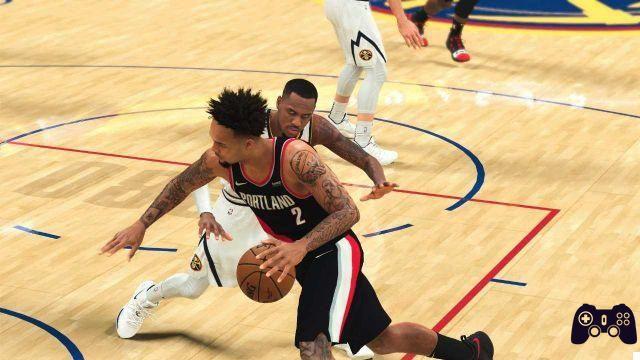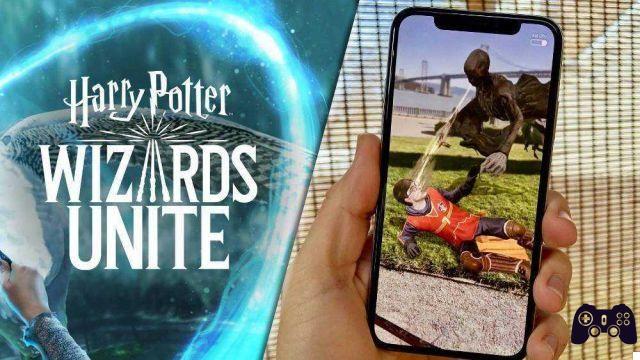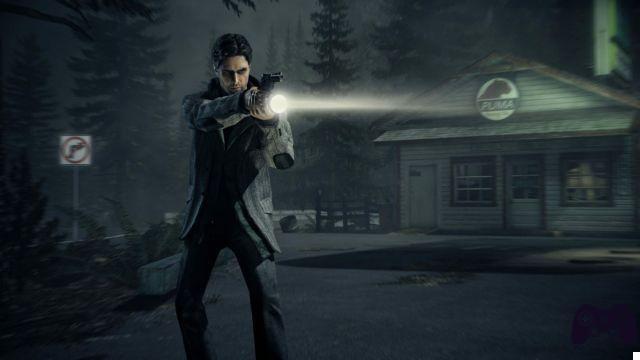Welcome back to the twelfth installment of our in-depth guide to Super Smash Bros. Ultimate's stellar cast of playable characters
In this ours guide, we will devote ourselves to the many characters playable of Super Smash Bros. Ultimate, starting with Mario up to the latest additions of the second Fighters Pass. In each episode we will describe about five or six fighters, however, dividing them according to the chapter of Smash in which they made their debut. With today's episode ends the cast of rookies first seen in the fourth Smash: we'll see the Duo Duck Hunt and four wrestlers who started out as DLCs, that is Ryu, Cloud, Corrin e Bayonetta. In the appendix, we will talk about special mechanics.
Quick Preamble
Before moving on to the characters, let's clarify the fulcrum of the guide: in Super Smash Bros. Ultimate the task of each player is to throw opponents off the screen, fighting in arenas that mix the genre of fighting with elements of platformer (X and Y allow you to jump). The A and B keys, used in combination with the various directions, give life to the most disparate moves, as well as the back keys to manage shields, dodges and holds. The game also implements tools that irremediably alter the fate of each encounter, but in this guide we will basically focus only and only on the characters themselves. Increasing the opponent's damage will make him lighter and, therefore, vulnerable.
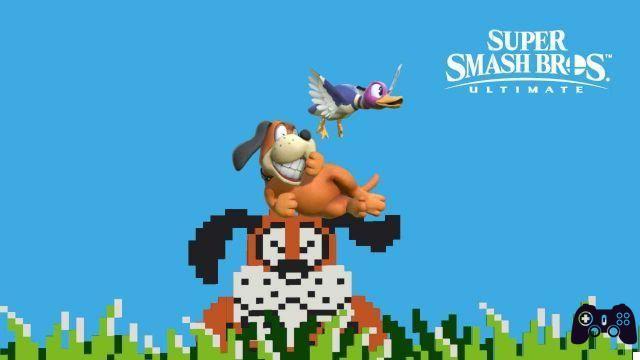
Duo Duck Hunt - Super Smash Bros. Ultimate Character Guide
As well as the Ice Climbers, Pit and ROB before them, the duck and the dog of Duck Hunt make up the retro character introduced in the fourth Smash: the Duo Duck Hunt. The two of them are joined, for some attacks including Smash attacks (right analog lever), by the player of the same Duck Hunt from the 80s. On the other hand, if the dog broke the fourth wall to laugh at us, it is right that the opposite also happens, right?
- Franchise of origin: Duck Hunt, Hogan’s Alley (si veda Gameplay)
- Origins: It wasn't just ROB with Gyromite and Stack-Up who saved goat and cabbage in the gaming industry after the crash of 83. Sold as a bundle with Super Mario Bros. in 1987 (Europe), Duck Hunt consisted of exactly what the title portended: duck hunting. The peripheral sold with the NES was the gun NES Zapper, calibrated for CRT TVs (and, therefore, the reason for the disappearance of the game outside the original console). But while the idea behind the NES Zapper was resurrected with the spiritual successor Wii Zapper, the virtual hunter's dog stayed alive as a meme for its tendency to mock the player if the shots failed. His return (along with the duck) as a secret character in the fourth Smash, along with the Duck Hunt scenario (above), has offered shelter to an otherwise almost forgotten game. Although the dog debuted in 1984 (Japan), ducks were seen in toy Nintendo of 1976 also called Duck Hunt, which used a projector.
- Gameplay: The Duo Duck Hunt is a character defensive, also equipped with multiple jumps. Acrobatic shooting (B) places the Hogan's Alley can on the ground, which explodes on contact with the enemy. Pressing B again can make it bounce again in the air. Clay pigeon shooting (↔ + B) throws forward, in fact, a target to be shattered by pressing B again. The crumbs of the target cause damage. Jump in pairs (↑ + B) allows the duck to take off, ensuring excellent recovery. Insane shooter (↓ + B) invokes one of the five possible gunslingers from the game for NES Zapper Wild Gunman, who immediately afterwards fire a shot based on the direction the Duo is facing. Each gunslinger boasts speed and firepower different.
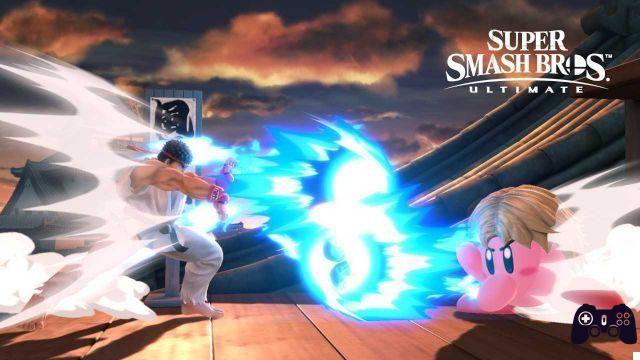
Ryu - Super Smash Bros. Ultimate Character Guide
The first DLC content of the fourth chapter mainly reintroduced cut characters like Mewtwo, Roy and Lucas, but with Ryu our guide gets to the first Super Smash Bros. Ultimate fighter - if you don't count Little Mac - to come from a fighting game. The barefoot nomad of Street Fighter he tries to face very different opponents to those he is used to, in a game where, unlike a standard fighting game, you can move with much more freedom. With him we find out very unusual mechanics.
- Franchise of origin: Street Fighter
- Origins: Along with Ken, Ryu was the only playable character in the first episode of the series he came from. However, nowadays we know Street Fighter II better as the "real" first episode, as it influenced the sequels much more than its predecessor. Together with his lifelong friend (and, amicably, rival), the transoceanic equivalent Ken Masters, Ryu trained with the master Gouken, and then continued as a self-taught, traveling the world in search of always new opponents.
- Gameplay: For the sake of fidelity to origins, Ryu brings with him some mechanics exclusive to him. Leaving aside the fact that it has two different Final Smashes based on proximity to the enemy (Shin Shoryuken, physicist; Shinku Hadoken, bullet) and the ability to apply always towards it in two-person fights, even the A key he finds himself the protagonist of particular dynamics. All non-aircraft attacks with A (A / A + ↔ / ↑ / ↓) change depending on how long you hold down the button. In addition, special moves can also be activated with A. Hadoken (B), Ryu's iconic fireball, can also be thrown with the sequence ↓, ↓ +>,> and A. Remember that we indicate "forward" with> and "backward" with <. Tatsumaki Senpukyaku (↔ + B), colloquially called "tornado kick", is well suited to returning to the field, and the more experienced can use the sequence ↓, ↓ + <, <and A to launch it. Shoryuken (↑ + B) boasts a good vertical radius, but like Little Mac it leaves something to be desired in horizontal displacement (and can be achieved with>, ↓,> + ↓ and A). Focus Attack (↓ + B) has no casting power, but has a minimum of super armor, and can break a shield or pin an enemy. For the latter move, there are no variants with A.
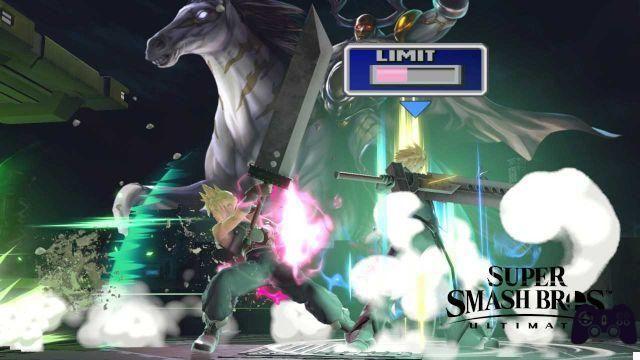
Cloud - Super Smash Bros. Ultimate Character Guide
Among the characters, or at least the series represented in Smash, that fans have requested most loudly are the properties of Square-Enix. At the end of Nintendo Direct on November 12, 2015, the Big N surprised everyone with its latest announcement. The protagonist of Final Fantasy VII it would in fact debut in the crossover series as a DLC. The fighting style of Cloud emphasizes more on the spectacularity of the Limit Breaks of the original game, than on the replication of some mechanics such as spells and management of related resources. For the latter, we will have to wait for the Hero. In Ultimate, Cloud is unlockable.
- Franchise of origin: final Fantasy
- Origins: Cloud's debut sees him get off the train at Midgar station to carry out a terrorist mission. The arena of the same name (image above) replicates the result of the bombing: one of the colossal reactors, on the left, is reduced to rubble. In reality, the “ecoterrorist” group AVALANCHE aims to free the planet where the events of Final Fantasy VII take place from the exploitation of its resources. AVALANCHE hired Cloud as, he claims, an ex-member of the SOLDIER military group. In fact, the traumatic event in which Cloud also inherited his iconic Potens sword (classic costume) led him to have false memories. The figure of the hero, therefore, is put to the sedan: a critical look at the conventions of role-playing games similar to that of MOTHER (Ness, Lucas), which FFVII has however carried out with more cynicism.
- Gameplay: Cloud's even costumes come from Final Fantasy VII Advent Children, a feature film that follows the epilogue of the original game. With the Sephiroth update, these costumes enjoy an aesthetically different but otherwise identical Final Smash. Cloud is powerful and fast on the ground, but lacks recoveries. Ripping Ray (B) is a common bullet. Cross shot (↔ + B) is based on the same principle as the combos of Marth, Roy and Lucina, and pressing B repeatedly can chain more hits. Tabula rasa (↑ + B) is a great upward shot, but - again - bad for recovering. Or at least, that's what we'd say if Cloud didn't have him too an exclusive mechanic. During the fight dealing and taking damage, or manually with Load limit (↓ + B), you can load the Limit bar by Cloud. At full charge, every move is corroborated: Rending Beam (B) performs more shots, Cross hit (↔ + B) requires one press in B, Taste table (↑+B) increases in the vertical reach e Final attack (↓ + B) can KO at low percentages. The enhanced attacks are though single use, and in Ultimate after 15 seconds the bar (present above the dammeter) empties by itself.
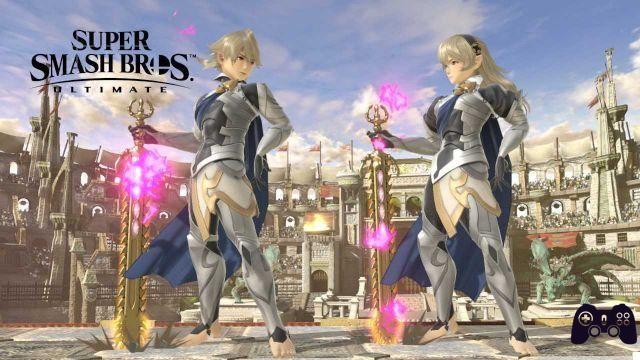
Corrin - Super Smash Bros. Ultimate Character Guide
Paving the way for Byleth that we will see later in the guide, the only one of the DLC characters of the fourth Super Smash Bros. to be part of a Nintendo IP was himself a fighter from Fire Emblem. As well as Daraen, also with Corrin we are talking about a male and female avatar at the same time. And like Roy and Byleth, his arrival played a cross-promotional role: the debut in the fourth Smash followed the release in Japan of Fire Emblem Fates, while preceding localization in the West. In Ultimate, he is an unlockable character.
- Franchise of origin: Fire Emblem
- Origins: Fire Emblem Fates has attempted to replicate the approach of the "double version" of Pokémon, or to give a better example, of the two The Legend of Zelda: Oracle of ... for Game Boy Color. Corrin's biological heritage sees him as a refugee from Hoshido, while the adoptive one consecrates him as part of the nobility of Nohr. The two kingdoms, however, are at war with each other: it is up to the player to decide whether Corrin will take the side of Hoshido (Fire Emblem Fates: Legacy) and have an easy life, or if instead Corrin will stay with Nohr's adoptive family (Fire Emblem Fates: Conquest) and aspire to a more difficult challenge.
- Gameplay: The hybrid of dragon and human, Corrin, boasts many tricks up his sleeve. Aside from a bullet, though, Corrin excels in melee. The bullet in question, Strike of the dragon fang (B), you can charge by holding B to increase its power. The result will temporarily paralyze the target, but also damage anyone who is hit by the bite from which the bullet is born. Dragon lunge (↔ + B) throws Corrin forward and allows him to stab an enemy or surface, and can be followed by a directional (↔) (A / B) kick. Dragon momentum (↑ + B) can be described as a hybrid of Squirtle's Waterfall and Pit's Gift of Flight and Dark Pit. Counterattack of the Dragon (↓ + B) is indeed a counterattack, but with a margin of error as generous as Shulk's. The Side Smash Attack (↔ + Right Analog Lever) traps opponents who make contact with the sword while loading, dealing damage to them. Only Corrin boasts this feature.
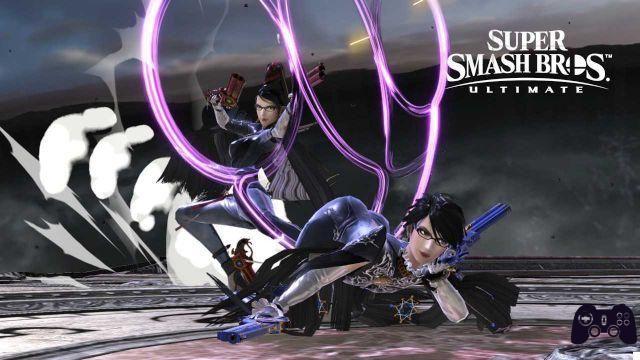
Bayonetta - Super Smash Bros. Ultimate Character Guide
While the DLC characters of the two Fighters Pass for Ultimate are established by Nintendo, in the case of the grand finale of the additional characters of the fourth Smash things were a bit different. At the time, the Grande N had in fact set up a vote, aimed at fans, with whom to elect the most wanted character ever. It was the winner Bayonetta, the attractive witch from the series of the same name. A character really formidable in combat, to the point of bringing Ultimate (where it is unlockable) to try to balance it more.
- Franchise of origin: Bayonetta
- Origins: Fourth resident evil it should have had a more action-oriented component, but the idea was kept aside for devil may cry. Since then, one of the dads in Capcom's parallel franchise - Hideki Kamiya - has given birth to a spiritual heir. This heir turned out to be, concluded an agreement between the newborn PlatinumGames and SEGA, Bayonetta on Xbox 360. The game, characterized by combo and continuous action, has been able to conquer a niche of fans but without ever going further. SEGA's hesitation to finance a sequel has led Nintendo to step in, bringing the franchise to the current situation. As for the homonymous protagonist, Bayonetta is a powerful witch who woke up without memories in a coffin at the bottom of a lake, after having slept for 500 years. To discover her origins, Bayonetta fights against the malevolent forces of Heaven, in a world where there is no absolute truth on the forces of good and evil.
- Gameplay: Like Ryu, but at the same time even more than him, Bayonetta allows you to chain combo with devastating potential. All of his standard attacks (A / A + ↔ / ↑ / ↓) can increase the damage dealt holding down A, Smash attacks (right analog lever) included. Lead storm (B), as the name suggests, riddles the opponent with blows; by holding B before releasing it, the attack can be empowered. Bayonetta alternates posture with each execution of the attack. Heel slide (↔+B a terra) e Calcio After Burner (↔ + B in the air) are two forward slides. Bewitched Swirl (↑ + B) is an upward leap not unlike Little Mac's Super Upright. However, hitting an opponent with ↔ + B or ↑ + B, it is possible use the move several times to perform combos or (by intercepting the enemy outside the arena) re-enter the field more easily. Temporal sabbat (↓ + B) replicates the eponymous Bayonetta game mechanic, making the witch the only Smash character capable of slow down time: it is a counterattack. If the enemy attacks when the move is activated, his movements will be slowed down in direct proportion to the damage. Bayonetta's Smash Attacks are lenses, but they boast a flow uncommon.
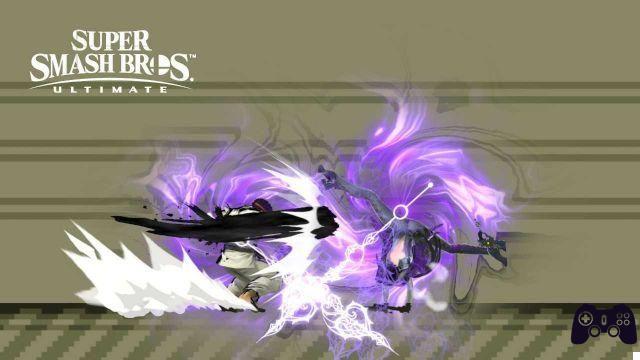
Concluding details, twelfth episode: special and exclusive mechanics
Between Ryu's special inputs, Cloud's limit bar and Bayonetta's Time Sabbat, the characters in our guide to Super Smash Bros. Ultimate are introducing more and more mechanical to them exclusive. Keeping all this in mind will not be easy at all, but as we recalled when talking about the Mii Warriors, we invite you to consult the move list along with our own guide. Also, becoming adept at using just one character can be advisable in some cases - it's a roster of over seventy characters, so don't be mad if your versatility wanes.
Furthermore, it is in cases like these that ours first episodes they turn out to be highly recommended, even more than these. We are entering uncharted territories, and it is with characters so unsuitable for beginners that we understand the choice of limiting the roster available at the first launch of the game to the first eight fighters (Mario, Link, Samus, Donkey Kong, Kirby, Yoshi, Fox and Pikachu) . The potential for strategy is expanding dramatically, and you will realize it in the next episode: the rookies of the fourth Smash end up here, and the next characters will be the new arrivals of Ultimate.
That's all for today: how are you finding yourselves so far? (You can find the summary here.) Please let us know by leaving us a comment below, and don't forget to stay on Holygamerz to not miss any news from the videogame world and beyond.




